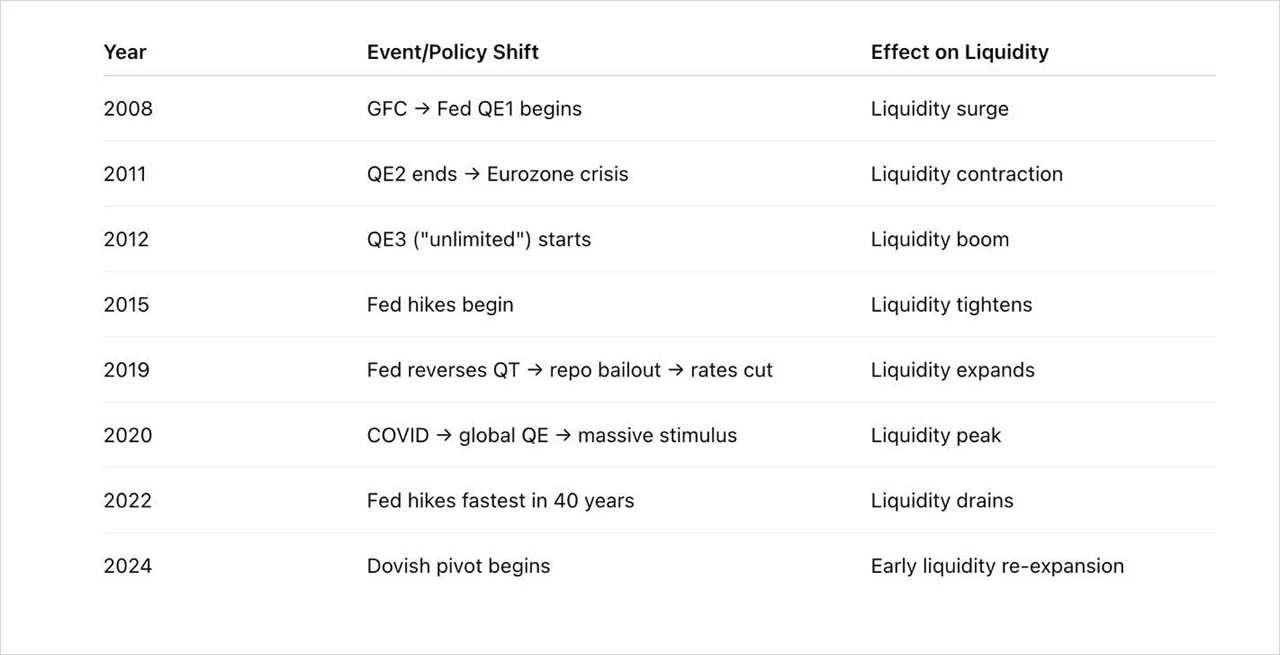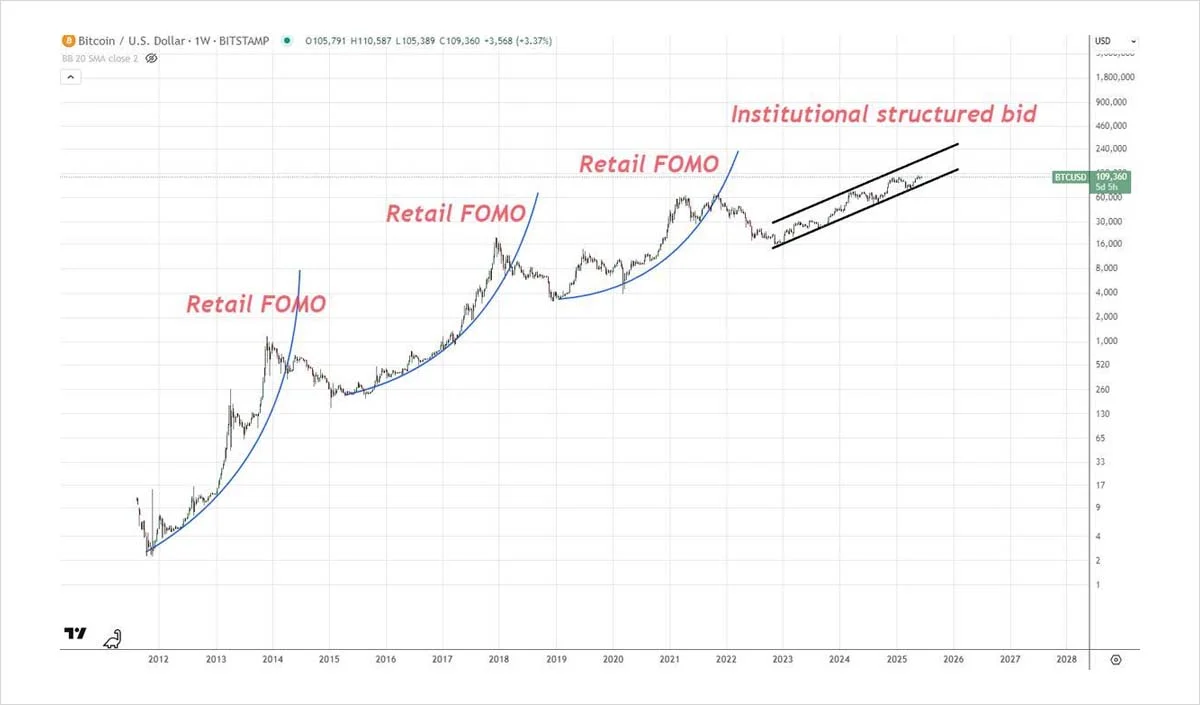Original Author: Two Prime
Original Translation: Tim, PANews
There has been extensive discussion surrounding Bitcoin's four-year bull and bear cycle. This pattern of exponential rises, sudden crashes, and subsequent new highs has characterized much of Bitcoin's history. However, it must be noted that there are ample reasons to suggest that this four-year cycle may be coming to an end.
First, a question needs to be raised: Why does a four-year cycle occur?
It can be attributed to three main factors:
Halving Effect
Every time the number of blocks increases by 210,000 (approximately every four years), the Bitcoin mining reward is halved. This mechanism typically leads to a price increase in the following years by creating a supply shortage.
Asset scarcity is often measured by the stock-to-flow ratio (S2F), which is the ratio of the existing total supply to the annual new supply. Taking the scarce asset gold as an example, its S2F ratio is around 60 (which can fluctuate slightly due to new gold mine discoveries). The current Bitcoin S2F ratio is approximately 120, meaning its annual new supply is only about half that of gold. This number will increase with each subsequent halving.

Global Liquidity Cycle
The correlation between Bitcoin and global M2 liquidity has been explained multiple times by us and various institutions. It is worth noting that many believe liquidity also follows a cyclical pattern of about four years. Although its precision is not as high as the metronomic nature of Bitcoin halving, this correlation does exist. If this theory holds, then the phenomenon of Bitcoin keeping in sync with it makes logical sense.

Psychological Perspective
Whenever a wave of exuberant bull markets occurs, it spurs a new wave of popularization. People's behavioral patterns confirm Gandhi's assertion: first they ignore you, then they laugh at you, then they fight you, and finally you win. This cycle repeats approximately every four years, as people progressively accept Bitcoin's value and attribute greater legitimacy to it. People always fall into excessive excitement, and the subsequent crashes cause the entire cycle to repeat.
The question now is, are these factors still dominating Bitcoin's price?
1. Halving Effect
After each halving, the proportion of newly added Bitcoin to the total supply decreases more and more weakly. When the new supply accounted for 25% of the total supply and dropped to 12.5%, the impact was significant; however, now that it has dropped from about 0.8% to 0.4%, its actual influence is no longer comparable.
2. Global Liquidity Cycle
Global liquidity remains a relevant factor for Bitcoin's price, although this influence is undergoing a transformation. Bitcoin is shifting from being retail-driven to being institutionally driven, and trading behaviors have changed. Institutions are making long-term accumulations, and short- to mid-term price declines will not shake them out of the market. Therefore, while global liquidity will still affect Bitcoin's price, its sensitivity to M2 liquidity will continue to weaken. Additionally, the behavior of over-the-counter institutions purchasing Bitcoin has also reduced price volatility, which is the true confidence in Bitcoin. Uncontrolled financial expenditures will be absorbed by Bitcoin, continuing its march toward a bright future.
3. Psychological Perspective
The broader Bitcoin is adopted, the stronger its stability in people's minds. The influence of retail selling behavior will weaken, and the shift of market dominance to institutional buyers will also reduce the volatility caused by retail investors.
In summary, Bitcoin remains one of the most promising assets in the world, and its growth model is undergoing a transformation from cyclical growth to (on a logarithmic scale) linear growth. Global liquidity has become the dominant force in the current market, and unlike the top-down (from institutions to retail) dissemination path of most assets, Bitcoin has achieved penetration from the bottom up, from grassroots to mainstream institutions. For this reason, we are witnessing the market stabilizing as it matures, with its evolutionary model becoming increasingly standardized and orderly. (Image source: DeathCab)

免责声明:本文章仅代表作者个人观点,不代表本平台的立场和观点。本文章仅供信息分享,不构成对任何人的任何投资建议。用户与作者之间的任何争议,与本平台无关。如网页中刊载的文章或图片涉及侵权,请提供相关的权利证明和身份证明发送邮件到support@aicoin.com,本平台相关工作人员将会进行核查。




